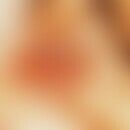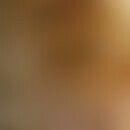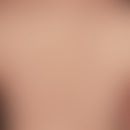General definitionThis section has been translated automatically.
The autologous graft consists of autologous keratinocytes on a biocompatible membrane (sheet) or other carrier media suitable for transplantation of autologous keratinocytes. The epithelial cells ( keratinocytes), obtained from a tissue sample of the patient, are first cultivated in primary culture, which takes about 7-21 days. Then the keratinocytes are transferred to a membrane (e.g. epidex) where they continue to proliferate and reach a preconfluent stage within a few days. The autologous transplant can already be transplanted at this stage. After the autologous graft has been applied, the keratinocytes migrate through the micropores as before and colonise the wound bed. If keratinocyte suspensions are used, cultivation in culture is not necessary. Processing takes place immediately after taking a tissue sample measuring approx. 2-4 cm2 from healthy skin.
IndicationThis section has been translated automatically.
The autograft system is a possibility to provide coverage with autologous keratinocytes in acute and chronic wounds and burn wounds where an appropriate wound bed is available. The healing rate of autologous grafts is usually related to the proliferative capacity of the patient's skin. The ability to proliferate decreases with the age of the patient and therefore the healing rate is likely to be lower in older patients. The more severely the patient is affected by systemic infection and the poorer their nutritional status, the lower the healing rate of the autologous graft. Monitoring of these factors is essential for optimal healing rates. Autologous grafts are transported in a nutrient medium that also contains penicillin and streptomycin. Small amounts of these antibiotics may still be present on the transplant, so it is advisable not to use grafts in patients with known hypersensitivity to these drugs. Autologous grafts are intended for autologous use and should therefore only be used in patients from whose biopsy they are prepared. Furthermore, it is recommended not to use any topical drugs or active substances of which a cytotoxic effect is known to be present in the area of the transplants for a period of at least ten days after application. As with other autologous grafts, it is possible that some areas treated with autologous grafts may show some colour differences from the surrounding skin. An optimal healing rate can be achieved if the autologous graft is applied to a non-infected, clean (without necrotic tissue), well vascularized granulation tissue. To achieve an optimal result with the autograft system, it is recommended to start systemic therapy with a broad-spectrum antibiotic three days before applying the autologous graft and to continue this therapy up to four days after the graft.
ImplementationThis section has been translated automatically.
- Autologous keratinocyte culture as a membrane system (sheets): care must be taken to avoid trapping air bubbles under the autologous grafts; if this does occur, tiny incisions can be made in the graft membrane to allow air to escape. It is important that the autologous graft is not displaced after it has been placed in place, as this could damage the cells. Each autologous transplant must be in close contact with the neighbouring autologous transplant. The individual grafts must not overlap by more than 5 mm. Post-operative treatment: The dressings must not be changed during the first five days after the transplantation. However, if the gauze dressings and light compression bandages are saturated with wound exudate, they should be changed carefully. After about five days the dry, sterile gauze dressings and light compression bandages may be changed more often to avoid accumulation of possible contamination. Antiseptics should not be used before the third postoperative day. When the grafts heal, the dressings are generally dry or only slightly moistened by exudate. The grafted epithelium begins to proliferate and establish itself as a multi-layered squamous epithelium.
- Autologous keratinocyte culture in suspension (Recell): the keratinocyte suspension is applied in two steps. A 0.2-0.3 mm thick, 2-4 cm2 split skin biopsy of healthy donor skin is taken from the patient at an inconspicuous site (the skin of the donor area should be as similar as possible to the skin of the recipient site). The skin of the recipient area is abraded or removed with a laser. This creates a graze in which the donor cells find a suitable surface for growth. In the Recell device, an enzyme (trypsin) is used to separate the skin into epidermis and dermis. After processing the cells into a cell suspension, the recipient site can be sprayed with the cells. The recipient site can be up to 80 times larger than the skin removal site. The wound is closed with a special dressing which prevents damage to the sensitive cells during the healing phase.
PreparationsThis section has been translated automatically.
Epidex; Recell



